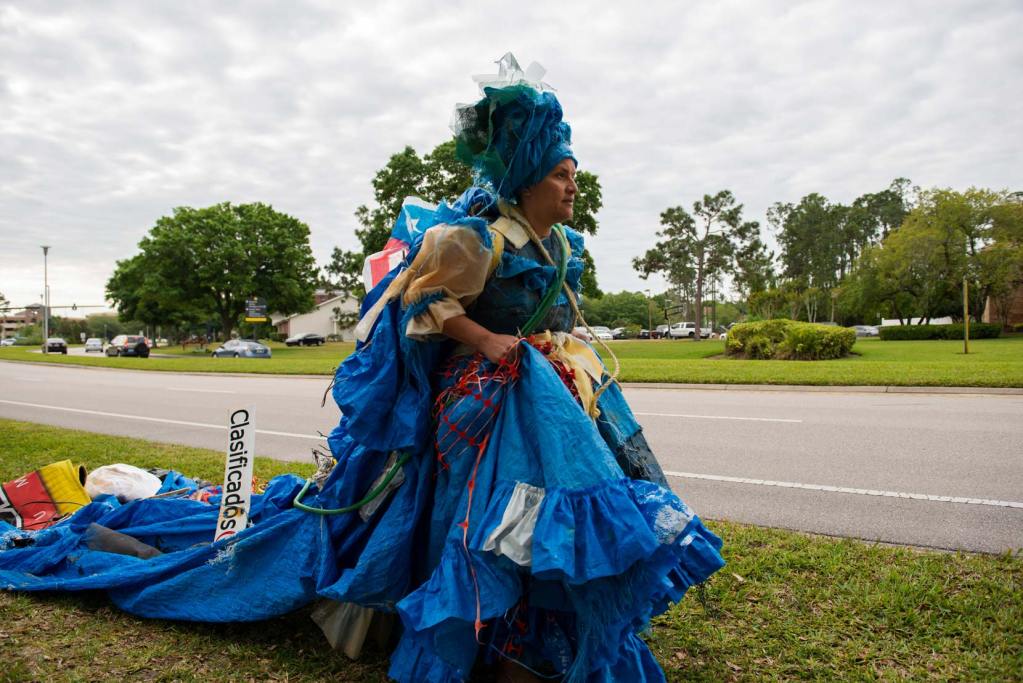A Visual Archive of Diasporican Liberation


As a conceptual artist myself, I instinctively approached Nuyorican and Diasporican Visual Art: A Critical Anthology (2025) with an eagerness to explore the visual storytelling within. I wanted to know: What is represented here? Is this anthology mostly painting and sculpture, or does it delve into photography, community, and performance art — mediums that often go underrepresented in traditional anthologies? The answer was immediate and powerful: This book does not limit itself. It expands. It pulses with artistic forms born of necessity, urgency, collaboration, and activism. Spanning painting, sculpture, photography, performance, graphic design, and artist books, the volume maps Puerto Rican visual expression alongside music, poetry, and street activism. It is, in many ways, a visual archive of liberation.
Edited by Arlene Dávila and Yasmin Ramirez, this impeccably researched and deeply needed anthology sets the record straight — not only by spotlighting Puerto Rican artists living in cities like New York, Chicago, Philadelphia, and Orlando, such as Rafael Ferrer, Candida Alvarez, Luis “Suave” Gonzalez, Ivelisse Jiménez, and Pepón Osorio, but by documenting their central role in shaping groundbreaking 20th-century postmodern and contemporary art in the United States. Nuyorican artists employed strategies that reclaimed a sense of urgency and spontaneous action, utilizing multiple media and interdisciplinary approaches. They dismantled traditional forms and embraced experimentation, merging performance, conceptualism, and political critique. Not only was the work a reaction to institutional norms, but it was also a call to reimagine the role of art in an increasingly fractured world.

These artists have long operated outside the traditional art historical canon, left out not for lack of talent or impact, but because they refuse to conform to narrow definitions of “Latin American Art” or US standards that are deeply rooted in racialized exclusion, including what the editors call the “archival methodologies” of academia, art institutions, and libraries that struggle to comprehend the complexities of diasporic identity. The book doesn’t beg for inclusion into that canon, but rather indicts it by asking why institutions remain so attached to their definitions of contemporary art and why these works are not already foundational to contemporary art history. Its editors and contributors do not seek permission; they assert that the work has always been here to be included. As a result, the book reframes art history itself to account for the multidimensionality of Latinx art, from Puerto Rican to Central American and Dominican diasporas — an especially urgent task in 2025, in a climate of book bannings and the steady erosion of cultural institutions.
A central quote opens the second chapter, drawn from Marta Moreno Vega’s 1993 essay “The Purposeful Underdevelopment of Latino and Other Communities of Color.” She writes: “In the late sixties and seventies our communities duplicated what the cimarrones (runaway enslaved people) did during colonization …. Collectively we defined, articulated and insisted upon our fair share of resources, our right to our own culture and right to self-determination.”

This quote captures the book’s essence: a sustained resistance against erasure. Vega’s words remind us that the fight for visibility is also a fight for cultural and political sovereignty. These artists were never simply producing work in a vacuum. They were creating through and against structures of abandonment and systemic violence, building cultural spaces where none were afforded. Nuyorican and Diasporican Visual Art is an excellent primer, in particular, of those alternative art spaces that emerged in Loisaida (the Lower East Side) from the 1970s to the 1990s, run by artists, neighbors, performers, activists, and organizers. The activation of these spaces emerged, in part, as a response to the radical activism of the 1960s and 1970s, fueled by the civil rights and anti-war movements. They include spaces often started in city-abandoned buildings or in vacant lots, like CHARAS/El Bohío in the former public school P.S. 64 on Avenue B and East 9th Street, or the New Rican Village on Avenue A. They combined the energy and synergy of artistic activities, from film screenings and street performances to exhibitions, while simultaneously operating soup kitchens and gardens and hosting housing rights meetings. Cross-exchanges with other artist-led community art spaces, such as Robert Blackburn Printmaking Workshop, were common.
These alternative spaces aimed to create room for innovative curatorial practices and to provide a community united by identity and a shared political vision to gather around art and engage with contemporary issues on a hyper-local level. Many did not survive the corporate-driven transformations of the city, sparked by the neoliberal agendas of federal administrations beginning with Reagan. Community organizations faced increasing pressure to conform to soaring real estate costs, adopt formal governing boards, and rely on private benefactors — changes that often failed to address the urgent needs of the communities they were meant to serve.
The anthology honors the foundational work of those artists who defined the Nuyorican movement in the 1960s and ’70s, such as Fernando Salicrup, Carlos Irizarry, and Raphael Montañez Ortiz, while also recognizing the evolution and continuation of their efforts by artists in the 1980s and ’90s to today, such as Papo Colo (cofounder of Exit Art), Juan Sánchez, Lee Quiñones, Nitza Tufiño, GeoVanna Gonzalez, Shellyne Rodriguez, and Wanda Raimundi-Ortiz. It makes visible a lineage of artmaking tied to resistance, community, and survival where the personal is always political.

One moment stopped me entirely. On page 138, I found an image of a woman carrying a large sculptural relief that nearly conceals her entire body. The scene unfolds on a familiar New York City street in the 1980s, recognizable by its old bicycles, parked cars, storefront signage, and the typical cacophony of downtown life. The relief is stark white, about three feet wide, and resembles a bundle of stacked crosses. Its presence — almost frozen in time, in contrast with the movement of people around her — is jarring. Within the brick-like shapes of the relief, a face emerges, as if trying to break through. It becomes a haunting reminder of those who once existed in these spaces, their memory carried by those who remain. In the corner, a young man on his bike looks directly at the camera with his fist up, conveying the emotional labor of preserving dignity in the face of erasure.
But it was the caption of the photo that held me: “Maria Dominguez Carrying Gentrification along Avenue C, New York, 1985. Photo by Marlis Momber.” I paused, moved by the weight of history in this image. As a New York City-born Dominican artist who performed a piece called “Revealing NYC: The Disappearance of Other” (2008) on Avenue C about the privatization of Stuy Town, I felt a deep connection to the legacy of Dominguez, Momber, and countless Nuyorican women artists paving the way through art activism. Their work resonates with me not as historical relics, but as guides and living markers in a city still unraveling its own contradictions. On April 2, as I reached out to Dávila and Dominguez to request permission to use the photo, I learned that Momber had passed away that very day in New Paltz in Upstate New York. I had never heard of her before this book. I wouldn’t have known of her passing if not for this assignment.
This is the power of documentation. This is why this anthology matters.
Elsewhere, a standout chapter by Abdiel D. Segarra Ríos argues that abstraction is inherently political, especially for artists of color whose conceptual work resists the identity-based caricatures expected by mainstream institutions. Edra Soto’s artwork incorporates graphic and decorative elements — common in Puerto Rican urban landscapes, such as iron fences — to craft a distinctive exploration of her sense of belonging and alienation. Her process engages a form of abstraction that reflects the tensions and contradictions inherent in Puerto Rico’s political condition: the dual identity in the US of both migrant and citizen. Soto offers subtle meditations on migration, cultural resilience, and the persistent notion of home. Indeed, across the anthology, themes of self-determination, collective organizing, and resistance to marginalization emerge powerfully.

Another strong chapter, written by curator Taína Caragol, notes that the Taíno were not passive figures of the past, as often told through colonial historical perspectives. It centers Fernando Salicrup’s “Una Vez Más, Colón (Once Again, Columbus)” (1978). Also the book’s cover image, the painting depicts fecund green tropical foliage. Hidden among the leaves are dozens of watchful eyes, symbolizing the Taíno people — the Caribbean’s Indigenous inhabitants — gazing suspiciously outward toward an unseen presence beyond the frame. Salicrup presents them as aware and resistant, confronting the looming threat of colonization. At the same time, the viewer is placed in the role of the conquistador, drawing attention to the dynamics of power and the enduring legacy of colonial oppression in contemporary society, inviting viewers to reconsider who is seen and who is watching.
Caragol’s analysis of Salicrup’s painting demonstrates just one way the anthology provokes readers to question how history is told through the empire’s lens, and how diasporic communities reclaim space through creation and documentation. Al Hoyos-Twomey’s research on Dominguez in particular exemplifies this archival care, which involves a deepening of our understanding of her work in relation to the complex intersections of racialized, physical, cultural, and political displacements experienced by Black, Indigenous, Asian, and working-class people. Hoyos-Twomey examines Dominguez’s contributions in dialogue with cultural theorists, such as Sarah Schulman and Coco Fusco, highlighting the critical, resistant, and imaginative responses they offer to disavow gentrification and the fetishization of the so-called “Other.” This violence not only displaces communities but also obscures the visibility and impact of artists and collectives. The archival care Hoyos-Twomey uses becomes a method of reclaiming history, memory, and meaning.
Taken as a whole, the book uplifts art as both resistance and blueprint for collective future-making. In the end, Nuyorican & Diasporican Visual Art is not just a book. It is a map, a record, and a movement. It reminds us that the work of liberation is collective and ongoing, and that visual art has always been a powerful force in that struggle.
Nuyorican and Diasporican Visual Art: A Critical Anthology (2025), edited by Arlene Dávila and Yasmin Ramirez and published by Duke University Press, is available for order online and in bookstores.






